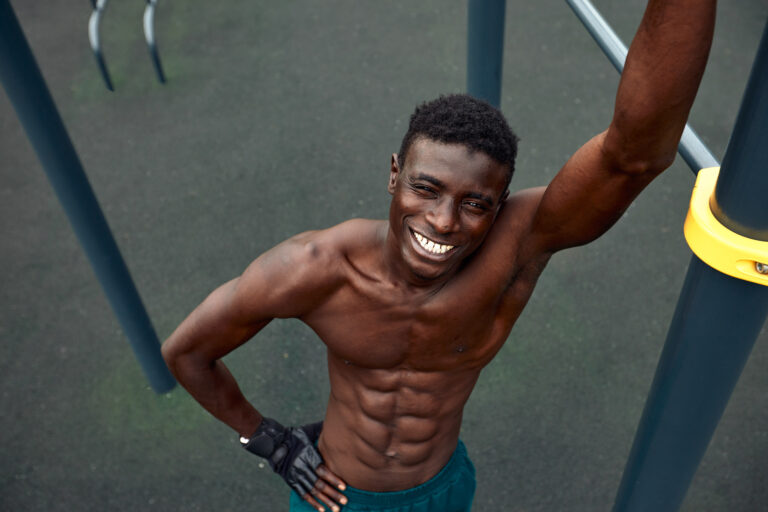What are Neck Muscles?
Neck muscles play a vital role in our daily lives, facilitating movement, providing structural support, and contributing to overall fitness and health. These muscles are essential for various functions, from basic head movements to complex athletic performances. Understanding the anatomy, physiology, and care of neck muscles can significantly enhance one’s fitness regimen and prevent injuries.
Anatomy of the Neck Muscles
The neck is a complex and crucial part of the human body, housing several important muscle groups. Among these, the sternocleidomastoid, scalene muscles, and trapezius are the primary muscles. The sternocleidomastoid is a prominent muscle that runs along each side of the neck, playing a key role in head rotation and flexion. Originating from the sternum and clavicle, it inserts into the mastoid process of the temporal bone, enabling the head to tilt and turn.
The scalene muscles, comprising the anterior, middle, and posterior scalenes, are located deeper within the neck. These muscles are pivotal in the movement of the neck and play a significant role in breathing. They attach from the cervical vertebrae to the first and second ribs, aiding in the elevation of the ribs during inhalation and assisting in lateral flexion of the neck.
The trapezius muscle, extending from the back of the neck to the mid-back, is another crucial muscle group. This large, triangular-shaped muscle helps move, rotate, and stabilize the scapula and extends the neck. The upper fibers of the trapezius elevate the scapula, while the middle fibers retract it, and the lower fibers assist in scapular depression.
Head and Neck Muscles
- Frontalis
- Temporalis
- Masseter
- Orbicularis oculi
- Orbicularis oris
- Buccinator
- Sternocleidomastoid
- Scalenes (Anterior, Middle, Posterior)
- Platysma
- Levator scapulae
- Trapezius (upper fibers)
Physiology of Neck Muscles
The physiology of neck muscles is intricate, involving coordination between various muscle groups to facilitate movement and support. These muscles not only enable a wide range of head and neck movements but also play an essential role in respiratory functions. The scalenes, for instance, assist in elevating the ribs, thereby aiding in deep breathing, especially during strenuous activities.
Neck muscles are closely connected to the nervous system. They are innervated by nerves that originate from the cervical spine. The sternocleidomastoid, for example, is innervated by the accessory nerve (cranial nerve XI), which is crucial for its function. This connection ensures precise and coordinated movements, allowing the head and neck to respond quickly to stimuli.
Sensory input from the neck muscles is also vital. Proprioceptors within these muscles provide feedback about head position and movement, helping maintain balance and posture. This sensory feedback loop is essential for everyday activities and more complex movements in athletic performance. Proper functioning of these muscles and their coordination with the nervous system is key to preventing injuries and maintaining overall neck health.
Common Injuries and Disorders
Injuries to the neck muscles are common and can significantly impact daily activities and athletic performance. Neck strains and sprains are among the most frequent injuries, often resulting from sudden movements, poor posture, or overuse. These injuries cause pain, stiffness, and limited range of motion, making even simple tasks challenging.
Whiplash is another common injury, typically resulting from rear-end car accidents. This injury occurs when the head is suddenly jerked backward and then forward, straining the neck muscles and ligaments. Symptoms include neck pain, headaches, and sometimes dizziness or blurred vision. Early intervention and proper rehabilitation are crucial for recovery.
Muscle tension and stiffness in the neck are often related to stress, poor ergonomics, or prolonged periods of sitting. This can lead to chronic pain and discomfort. Stretching exercises, ergonomic adjustments, and stress management techniques can help alleviate these issues and prevent long-term problems.
Strengthening and Conditioning
Strengthening and conditioning the neck muscles is essential for overall fitness and injury prevention. A well-rounded exercise program that includes isometric exercises, stretching routines, and resistance training can significantly improve neck strength and flexibility.
Isometric exercises involve contracting the neck muscles without changing their length. These exercises can be done by pressing the forehead or the back of the head against a stable surface and holding the position. This helps build muscle endurance and strength without requiring complex equipment.
Stretching routines are vital for maintaining flexibility and preventing muscle stiffness. Simple stretches, such as tilting the head to each side, looking up and down, and gently rotating the neck, can help keep the muscles supple and reduce the risk of injury. Regular stretching also improves circulation to the muscles, promoting faster recovery after workouts.
Resistance training can further enhance neck muscle strength. Using resistance bands or light weights (e.g., 1-2 kg or 2.2-4.4 lbs) can add an extra challenge to neck exercises. Exercises like shoulder shrugs and neck extensions with resistance help build muscle mass and increase strength. Proper technique is crucial to avoid injury, so it is recommended to start with light resistance and gradually increase as strength improves.
Role in Sports and Physical Activities
Strong neck muscles are crucial for optimal performance in many sports and physical activities. In contact sports like football and wrestling, robust neck muscles can help absorb impacts and reduce the risk of concussions and other injuries. Athletes in these sports often include specific neck strengthening exercises in their training regimens.
In activities such as swimming and cycling, neck muscle endurance is essential. Swimmers need strong neck muscles to maintain proper head position and breathing technique, while cyclists rely on neck strength to support their head during long rides. Incorporating neck muscle conditioning into training can enhance performance and prevent fatigue-related injuries.
Even in non-contact sports, neck muscle health is important. Runners, for example, benefit from strong neck muscles as they help maintain good posture and reduce strain on the upper body. Including neck muscle exercises in a balanced fitness program can lead to better overall athletic performance and reduced risk of injury.
Key Takeaways
Neck muscles are essential for a wide range of functions, from basic movements to complex athletic performances. Understanding their anatomy, physiology, and how to properly care for them can enhance overall fitness and prevent injuries. Incorporating neck muscle strengthening and conditioning exercises into a regular fitness routine is crucial for maintaining good neck health and optimizing athletic performance.









